|
1 - Milia-like cysts
2 - Comedo-like openings
3 - Exophytic papillary structures
4 - Red Lacunas
5 - Leaf-like areas
6 - Central White patch
Milia-like cysts
This typical example of seborrheic keratosis is characterized by numerous milia-like cysts (arrows) and few comedo-like openings
|

|
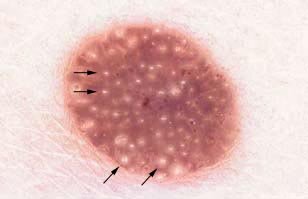
|
Acanthotic seborrheic keratosis with several milia-like cysts (arrows) and few, variously shaped comedo-like openings
|

|
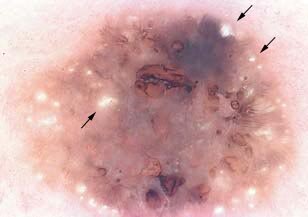
|
This acanthotic type of seborrheic keratosis reveals rare, variously sized horn pseudocysts corresponding to milia-like cysts
|
|
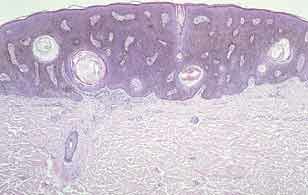
|
top
Comedo-like openings
This heavily pigmented seborrheic keratosis is characterized by numerous comedo-like openings (arrows). Only few milia-like cysts can be recognized.
|

|
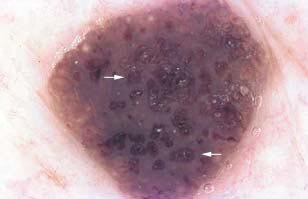
|
The comedo-like openings (arrows) of this seborrheic keratosis are only faintly colored, in contrast to the dark-stained comedo-like openings of the previous example. In addition, note few, large milia-like cysts in the lower left part of this lesion.
|

|
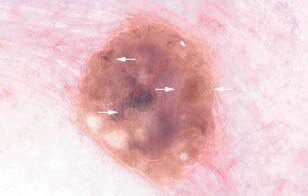
|
Note few comedo-like openings and also some horn pseudocysts in this seborrheic keratosis
|

|
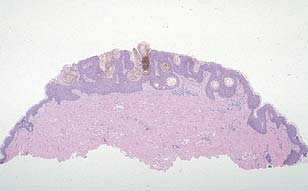
|
top
Exophytic papillary structures
This papillomatous dermal nevus (Unna nevus) is characterized by several, closely aggregated exophytic papillary structures. Nearly identical papillations are commonly found also in seborrheic keratoses.
|

|
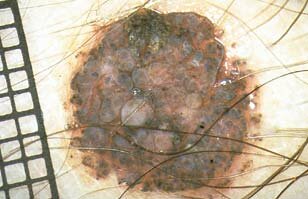 |
Within the center of this Clark nevus several exophytic papillary structures are recognized
|
 |
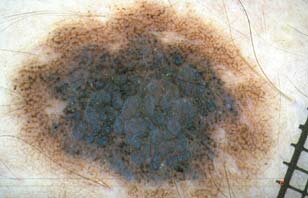
|
This is a typical example of a papillomatous dermal nevus (Unna nevus) exhibiting a pronounced papillomatous appearance that corresponds to exophytic papillary structures
|
|
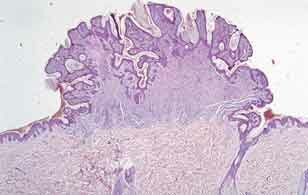
|
top
Red Lacunas
Stereotypical example of hemangioma with numerous red-bluish lacunas
|

|
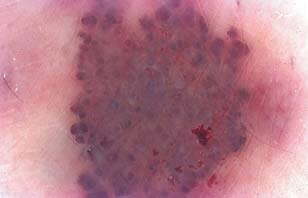
|
Angiokeratoma with several red-violaceous to blue-black lacunas due to thrombosed vascular structures. Note that the blue-whitish veil in this angiokeratoma has no diagnostic significance.
|

|
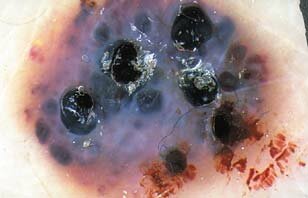
|
This high magnification of a typical hemangioma depicts the corresponding histopathologic finding of a given red lacuna
|
|
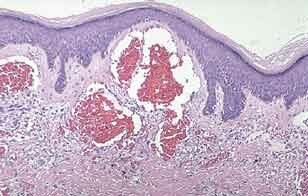
|
top
Leaf-like areas
The clue for the diagnosis of this basal cell carcinoma is the presence of leaf-like areas (arrows) at the periphery of this lesion. Obviously one needs to have some visual imagination to recognize leaf-like structures!!
|

|
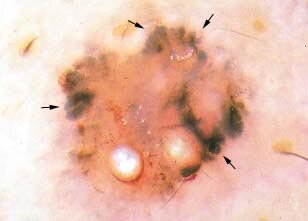
|
Another example of basal cell carcinoma with numerous leaf-like areas (arrows) along the circumference of this lesion. Since no clear-cut pigment network is present, the blue whitish veil has no diagnostic significance.
|

|
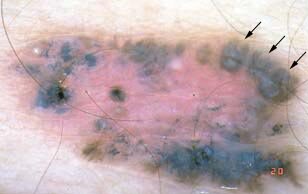
|
This superficial type of basal cell carcinoma is composed of large aggregations of basaloid cells some of which contain clusters of melanophages thus forming the so called leaf-like areas
|
|
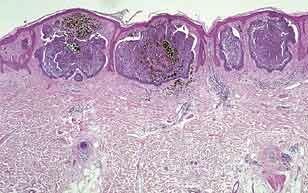
|
top
Central White patch
The central white patch represents the dermoscopic hallmark of dermatofibroma, as illustrated in this example
|

|
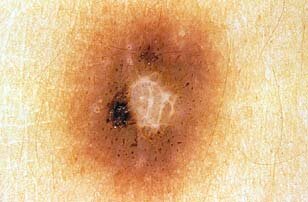
|
Another example of typical dermatofibroma with a central white patch
|

|
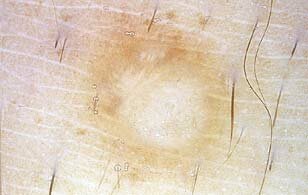
|
top
|





























